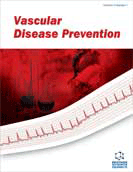
Abstract
The endothelium of the coronary arteries has been identified as the important organ that locally regulates coronary perfusion and cardiac function by paracrine secretion of nitric oxide (NO) and other vasoactive peptides. Therefore, also in cardiac transplantation, the established organ procurement with hypothermic storage in solutions designed to preserve myocytes but not endothelial cells, has to be critically discussed. Heart transplantation is a treatment for end-stage heart failure. This intervention has promising survival rates: 84% oneyear and 65% five-year survival. However, these survival rates offer plenty of room for improvement and further research in the areas of organ preservation and perioperative management. This review will focus on possible strategies to improve donor and recipient management in regard to a functional endothelium and NO. We briefly address the following topics: (1) NO pathway and effects, to lay the ground for possible therapeutic strategies and interventions; (2) NO and ischaemia / reperfusion, to understand the mechanisms that lead to NO depletion and its consequences; (3) NO and hypothermia, to understand the effects of hypothermia on the endothelium; (4) Current status of donor and recipient management, to describe the strategies used today; (5) Possible new approaches: NO-scavenging and NO-substitution, to describe the recent research that is performed in this area including some of our own results; (6) Outlook in donor and recipient management, to suggest possible new directions, based on our current knowledge.
Keywords: nitric oxide, heart transplantation, donor and recipient management



